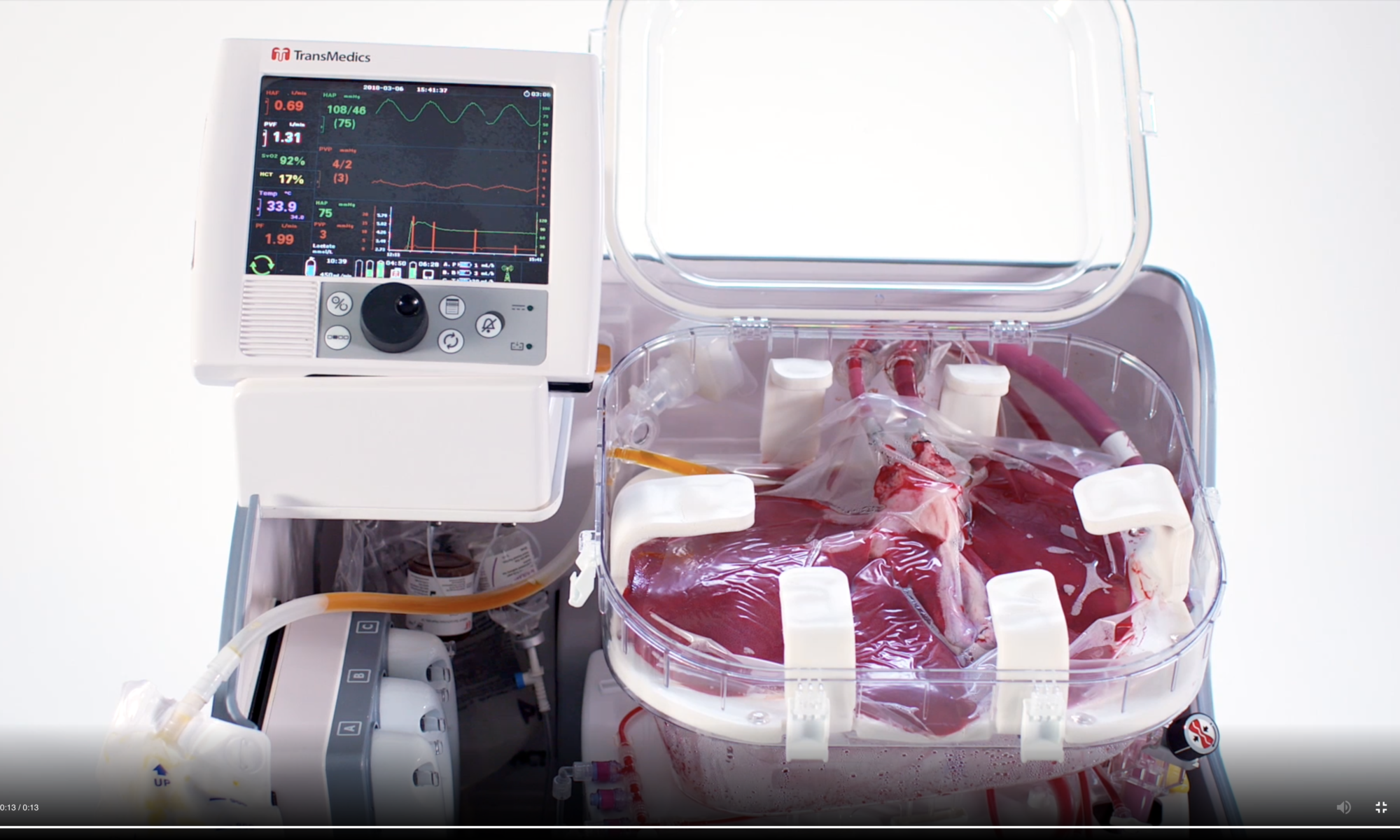A revolutionary new organ preservation system allows transplant programs to travel farther distances to procure donor hearts and provides the ability to better assess potential donor hearts that have borderline function. Approved by the FDA for use with donor hearts within the last 12 months, the organ care system is a portable, warm perfusion and monitoring system designed to keep a donor heart in a beating, human-like, metabolically active state.
Once a donor heart is procured, instead of being placed in preservation solution in an ice cooler, the donor aorta is attached to the organ care device where a pacemaker keeps the heart pumping and blood from the donor perfuses the heart via the coronary arteries. Through cannulas, blood drains in a normal fashion from the pulmonary artery and left atrium. While the heart is on the device, transplant physicians can follow various parameters, such as blood pressure in the aorta, coronary artery blood flow and lactate levels to gauge the metabolism of the heart.
Call 214.820.6856 to refer a patient for heart transplant at Baylor Dallas
“In some donors, particularly younger donors, heart function may be decreased as a result of head injury or other trauma,” says Dan Meyer, MD, Chief of Cardiac Transplantation and Advanced Cardiac Circulatory Support, Baylor University Medical Center at Dallas (Baylor Dallas), part of Baylor Scott & White Health.
“In these cases, we can put the heart on this device and determine if it is viable for transplant. While it’s on the device, we can do an echocardiogram on the heart, as well as do a visual inspection.”
With the traditional method of preservation, the risk of graft dysfunction and mortality increases after four hours of ischemic time. With the new organ care device, the time on the device is not considered ischemic time because the heart is pumping and receiving oxygenated blood.
According to Dr. Meyer, the longest time the Baylor Dallas cardiac transplant team has kept a donor heart on the device is nine hours; however, the goal is an average of about six hours.
“Since the new allocation system removed local priority, we are able to travel farther and more frequently. We already are more aggressive than many transplant centers in how far we will go to procure a donor heart, and this new device lets us go a little farther,” says Shelley Hall, MD, FACC, FHFSA, FAST, Chief of Transplant Cardiology, Mechanical Circulatory Support and Advanced Heart Failure, Baylor Dallas and president of the Texas Chapter of the American College of Cardiology. “Nationally, only 30 percent of the hearts offered are accepted, so we need to find ways to make more hearts usable.”
While Dr. Hall and Dr. Meyer agree that this is a welcome additional technology, transplant programs must be judicious in its use because the device is very expensive. As they gain more experience with the device, they expect new opportunities to arise to use medications to optimize the donor heart.
“This new device is very exciting,” Dr. Meyer says. “After performing heart transplants for so many years, I wondered what could possibly be new, but seeing this organ care system in action is pretty incredible.”







